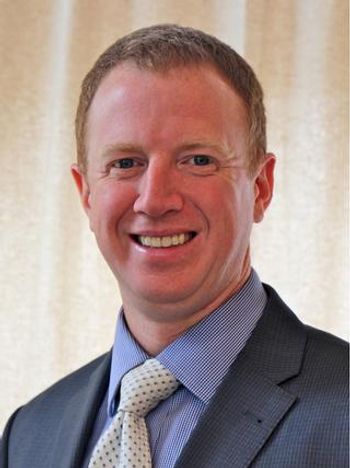
State Oversight of Industry Gifts to Physicians All Bark
NEW YORK -- Minnesota and Vermont require pharmaceutical companies to disclose payments of or more to physicians and other health care providers, but both states have been accused of failing to deliver on that promise of transparency.
NEW YORK, March 20 -- Minnesota and Vermont require pharmaceutical companies to disclose payments of or more to physicians and other health care providers, but both states have been accused of failing to deliver on that promise of transparency.
The two states are not living up to their pledges to make it clear to patients whether pharmaceutical company largess and gifts of various kinds might be influencing physicians unduly in the choice of drugs they prescribe, said geriatrician Joseph S. Ross, M.D., M.H.S., of Mount Sinai Medical School, in the March 21 issue of the Journal of the American Medical Association.
"The Vermont and Minnesota laws requiring disclosure of payments do not provide easy access to payment information for the public and are of limited quality once accessed," wrote Dr. Ross. "However, substantial numbers of payments of or more were made to physicians by pharmaceutical companies."
Dr. Ross expanded on the thrust of his JAMA paper in an interview. The Pharmaceutical Research and Manufacturers of America (PhRMA) provided a statement of response attributable to Ken Johnson, the senior vice president.
The PhRMA executive said Dr. Ross' JAMA paper only served to make a confusing issue still more confusing. Dr. Ross responded that the confusion springs largely from the narrow nature of the disclosure as mandated by the states.
"In Vermont the law provided too easy an opportunity to designate any payment as a 'trade secret' to avoid disclosure and in Minnesota the law does not lay out any strategy for enforcement, nor did the state appoint anyone to do the enforcing," said Dr. Ross.
Dr. Ross and colleagues conducted a cross-sectional analysis of publicly held data form July 1, 2002 through June 30, 2004 in Vermont and from Jan. 1, 2002 through December 31, 2004 in Minnesota.
With no enforcement mechanism in Minnesota only 25% of pharmaceutical companies reported payments to physicians, and in Vermont 61% of payments were classified as trade secrets.
"But to get those data we had to jump through a lot of hoops," said Dr. Ross. Those hoops included drawn out negotiations with Vermont's attorney general and "manual photocopying of individual disclosure forms" at the Minnesota State Board of Pharmacy.
Johnson commented that Dr. Ross offered a sophisticated analysis of a "mish-mash of data," and the JAMA paper misinterpreted it to boot.
Johnson said the laws in the two states "mix apples with oranges" because they combine activities like drug detailing with research grants to academic centers.
Moreover, he argued that the contracts with research centers usually involve biomedical research that legitimately deserves trade secret protections.
Dr. Ross said much of the confusion could be avoided with a "very simple online disclosure run by each state that would require drug companies to just report, 'we gave X amount of money to this physician,' into a single database," he said.
Dr. Ross contended the "trade secret" claim was often so broad that it "covered money spent for food brought into lunch meetings with detail men."
Johnson defended the detail meetings saying that the "detailers" were highly trained professionals who were dedicated to the task of making "sure medicines are used properly and patients are safely and effectively treated."
And in any case, Johnson said state laws simply add redundancy to an industry that is already adequately regulated by the FDA and the U.S. Department of Justice, which "enforces fraud, abuse and anti-kickback laws."
In addition to federal oversight, Johnson said the industry policed itself through its Code on Interactions with Healthcare Proessionals that prohibits the companies from treating physicians to all forms of entertainment-including gold outings-and requires a ceiling on gifts and limits gifts to items that support a medical practice, such as a stethoscope or medical dictionary.
Dr. Ross said five states and the District of Columbia mandate disclosure of drug company payments to physicians and 11 more states are considering similar legislation.
The authors picked Minnesota and Vermont because the laws in both states stipulate that the payments should be publicly available, but he noted that the "success of these laws in making payment information available to the public has not been evaluated."
Most of the payments-85.5% in Vermont and 89.8% in Minnesota-went to physicians, but a smattering of payments went to nonphysicians as well as healthcare organizations.
Among the findings:
- In Vermont, 58 pharmaceutical companies said they made payments totaling .58 million in payments over the two years studied-but they disclosed details for only 12,227 payments totaling .18 million. Another .41 million in payments were not disclosed based on the trade secret claim.
- Of the companies reporting payments in Vermont, 13 companies during the first year studied and 10 more during the second year designated their payments as trade secrets.
- The median payment in Vermont was (range 0.22 to ,458). Twenty-three percent of the 12,227 payments to Vermont doctors were for or more.
- About two-thirds of the or greater payments in Vermont were in the form of food and 24.4% were cash, check, honoraria, or donation.
- In Vermont, 28.4% of the or more payments were designated for education, 25.5% to cover detailing, and 14.1% for speakers
- In Minnesota 60 companies reported making payments, but only 15 companies reported making payments in each of three years studied.
- Three years of data from Minnesota revealed 7,290 payments of which 95% were for or more for three-year total of .96 million.
- In Minnesota 45.5% of the payments of or more to physicians were for "unspecified purposes, 26.6% for education, and 13.1% for speakers."
Troyen A. Brennan, M.D., M.P.H., of Aetna, Inc., in Hartford and Michelle M. Mello, M.Phil., Ph.D., J.D., of Harvard School of Public Health, said there is a growing sentiment among physicians and hospital executives that "too much money is spent on marketing drugs and that the public has particular unease about off-label promotion."
But the study by Dr. Ross and colleagues suggested that pharmaceutical companies are turning a deaf ear to those concerns, they wrote in an accompanied JAMA editorial.
Drs. Brennan and Mello credited the pharmaceutical companies with "profound contributions to medical therapy and public health," but they pointed out that the companies are for-profit industries. "Their primary commitment is to create shareholder value, not maintain an altruistic commitment to patients," they wrote.
Johnson's answer to criticism about marketing was the contention that the editorial writers failed to realize that pharmaceutical marketing accounts for only about 10 cents of every health care dollar.
Dr. Ross cautioned that his study was limited by its reliance on data from only two states, each with a relatively small number of physicians. Moreover, because the state allowed different exceptions and exclusions, it was not possible to obtain standard data from each state. Finally, the studies were limited by the authors' inability to obtain complete data, since in both data sets information was often missing from several fields.
Dr. Brennan is employed by Aetna. Dr. Mellow had no disclosures.
The study was funded by the Robert Wood Johnson Foundation.
Newsletter
Enhance your clinical practice with the Patient Care newsletter, offering the latest evidence-based guidelines, diagnostic insights, and treatment strategies for primary care physicians.
















































































































































































































































































































